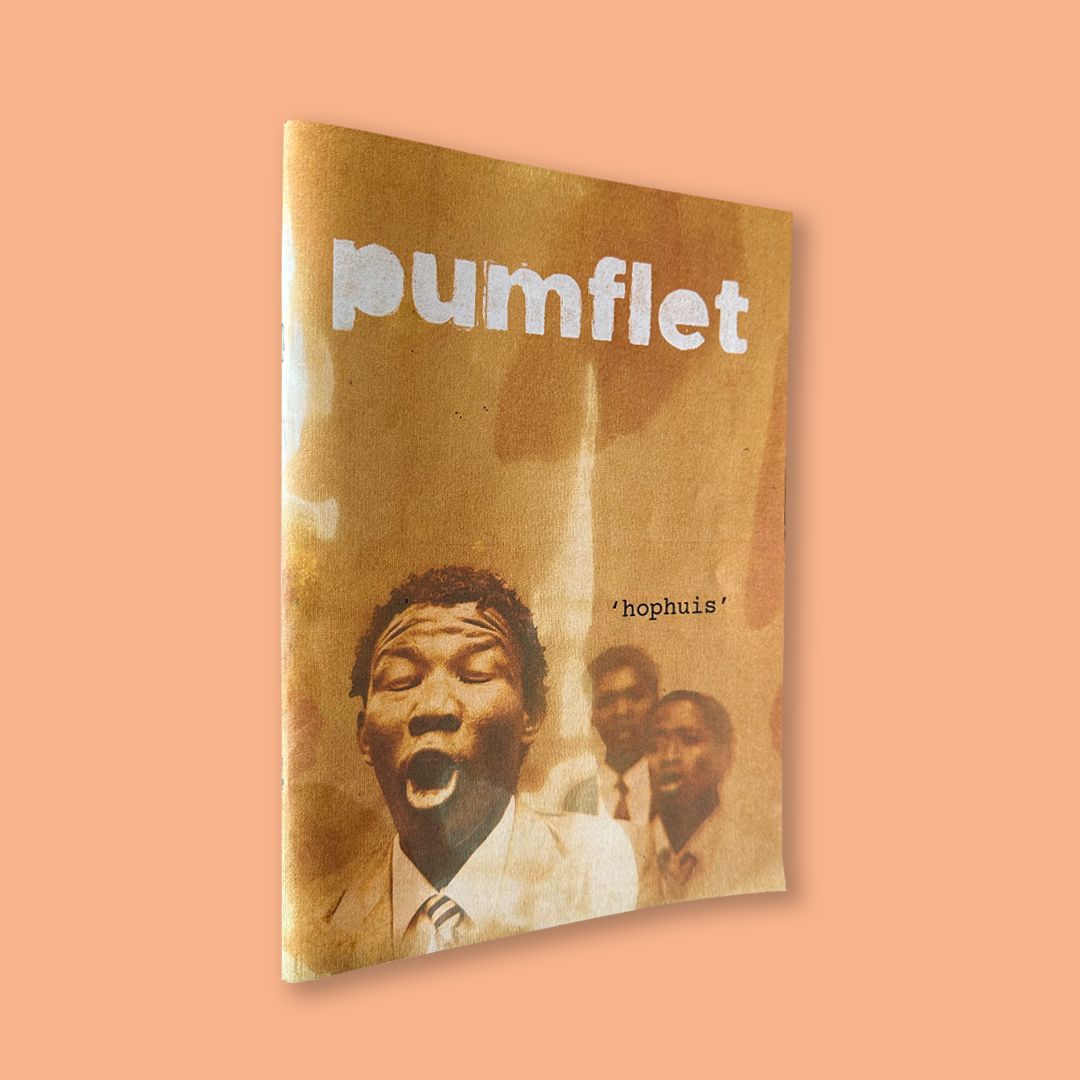“…The struggle of black people inevitably appear in an intensely cultural form because the social formation in which their distinct political traditions are now manifest has constructed the arena of politics on ground overshadowed by centuries of metropolitan capitalist development, thereby denying them recognition as legitimate politics. Blacks conduct a class struggle in and through race. The BC of race and class cannot be empirically separated, the class character of black struggles is not a result of the fact that blacks are predominantly proletarian, thought this is true…”- (Frank Talk Staff Writers in ‘Azania Salutes Tosh’ – circa 1981)

front cover:
Tosh by Steve Gordon
back cover:
Kippie by Basil Breakey
Pumflet 'Hophuis' (Wolff Architects, 2023)
Pumflet 'Hophuis' (Wolff Architects, 2023)
'hophuis' documents a series of journeys to and activations made at the Steinkopf Community Centre in Namaqualand in South Africa's Northern Cape. The building was at once a lively centre for communal and political gathering, (albeit controlled by the church) but stands today as an open, civic-scaled volume of broken walls, a concrete floor, and with its electrical and water services completely removed .
The town of Steinkopf itself is situated in what was declared a 'coloured reserve' by the apartheid government in 1948, and the place is significant for a number of reasons. Its original name 'Kookfontein' (which referred to an ancient water well) was lost when it was renamed by German missionaries who settled there in the 18th century.
Along with a new name, the missionaries bought with them what James Baldwin has referred to as 'theological terror': warnings of eternal damnation for all who followed the local Nama, Khoi and other indigenous spiritual practices. Dance and song, a core part of the spiritual practices of the Nama in particular, were prohibited. Thus, many of these cultural practices, along with the Nama language, remain treasured by a few cultural custodians but are otherwise mostly forgotten.

